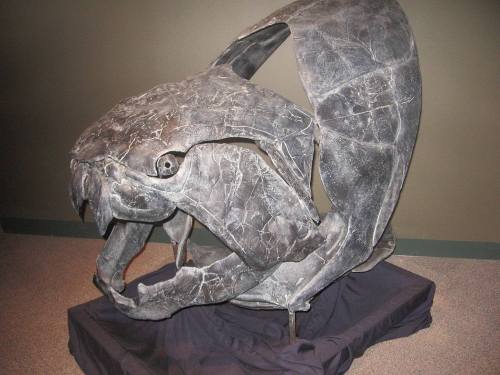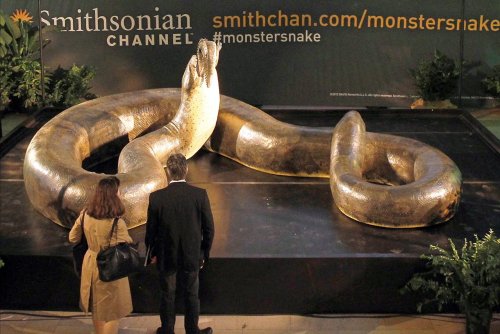Persisting Hexagonal Storm At Saturn`s North Pole

Persisting hexagonal storm at Saturn`s North Pole
More Posts from Starry-shores and Others
Can you tell us something about j1407b?
J1407b is an exoplanet (but it can also be a brown dwarf) very interesting, orbiting its star J1407. It is larger than Saturn or Jupiter, and is surrounded by a ring system that is about 200 times larger than the rings of Saturn, very different from what we are accustomed to see.

Thirty-seven rings extending 90 million kilometers from the planet — over half the distance from the Earth to the sun — encircle the world. These planetary rings are the first found outside the solar system.

This exoplanet is 434 light-years away in the constellation Centaurus.

J1407b could house moons that could be formed by the material of the rings. One of their moons could be as large as Mars or Earth, and could orbit between the gaps of the rings, shaping them.

Astronomers expect the rings to become thinner in the next million years and eventually disappear as they form satellites from the material of the rings.

The discovery of the J1407 system and its unusual eclipses were reported by the team led by astronomer Eric Mamajek of the University of Rochester in 2012. The orbital period of J1407b is estimated at about a decade.
Simulation of the eclipse of the star J1407 by the ring system around its putative exoplanet J1407b. Each time a ring passed in front of the star, it dimmed. When entering a gap, the star brightened up again. Graphing the highs and lows, scientists created a profile of the ring system.

What the rings of J1407b would look like in our sky (above the Old Observatory in Leiden, Netherlands) if it was located where Saturn is now.
image 1°, image 2°, image 3°, image 4, image 5° & image 7°
Here are some links if you want to read more about it: here, here and here.


I am so grateful that this thing is fucking extinct.
I would never have been able to tolerate having the job of creating this 3D model.
THIS IS WHAT MY WORST NIGHTMARE LOOKS LIKE.
cosiscience
Walking dinosaur, Columbus Interactive Science Museum


Savage 10 metre fish of the Silurian and Devonian Heavily armoured piscine torpedoes with fierce teeth roamed the oceans in the early days of fishes, in fact the Devonian era is called the age of fishes by palaeontologists as they had a huge burst of speciation and diversified to fill most marine ecological niches during this time. The now extinct (fortunately) class known as placodermi (plate skin in Greek) was the apex predator of these long gone waters, and thrived from 438 to 358 million years ago, dying out at the end Devonian mass extinction (one of the lesser ones).
Keep reading
From the invention of wireless to Radio Broadcast to Space

The word radio was coined in 1907 after a decade of furious activity to discover the mechanism for wireless transmission. A decade earlier, French physicist Édouard Branly coined the term radioconductor to describe a means of wireless transmission. He based his term on the verb radiate which ultimately came from the Latin word radius meaning the spoke of a wheel, a ray or beam of light. The word radio was first used by itself in a 1907 article by Lee De Forest. It was used five years later by the Navy to distinguish it from other wireless technologies and entered common usage in the next decade. Radio technology advanced so quickly that a little over 50 years later on November 16, 1974, scientists broadcast the first interstellar radio message out to the stars, a program that later became known as METI, the Message to Extra-terrestrial Intelligence. To date, only 9 messages have been transmitted by a variety of organizations:
{The Morse Message (1962)}
Arecibo message (1974)
Cosmic Call 1 (1999)
Teen Age Message (2001)
Cosmic Call 2 (2003)
Across the Universe (2008)
A Message From Earth (2008)
Hello From Earth (2009)
RuBisCo Stars (2009)
Wow! Reply (2012)
The first radio message, known as the Morse Message, does not technically belong on this list as the Russians directed the message to Venus, and thus the primary mission was not Interstellar. The message targets vary in distance from the very short (the majority of targets are under 100 light years away) to the very far, including the Arecibo Message, which targets the M13 globular cluster 24,000 light years away.

While there have been some dissenting voices who argue that ‘revealing’ our location to enemy or hostile alien civilizations is ill-advised at best, most scientific consensus agrees that due to the physical restrictions on speed and travel (as currently understood) we are in no danger of imminent attack. While the Arecibo Message won’t reach its target for another 25,000 years or so, the first of the other messages should arrive by 2029. Other scientist point out that our current terrestrial radio and television broadcasts represent their own METI signal and thus we have no need to fund additional broad- or narrow-cast messages.
Image of the Arecibo Radio Telescope courtesy Marius Strom under a Creative Commons 3.0 share alike license.
Image of the Arecibo Message of 1679 bits in the public domain.


The Titanoboa, is a 48ft long snake dating from around 60-58million years ago. It had a rib cage 2ft wide, allowing it to eat whole crocodiles, and surrounding the ribcage were muscles so powerful that it could crush a rhino. Titanoboa was so big it couldn’t even spend long amounts of time on land, because the force of gravity acting on it would cause it to suffocate under its own weight.

The Sun from the Internation Space Station

Say hello to globular cluster 47 Tucanae 👋
This glittery spray of ancient stars is about 16,700 light-years away from Earth toward the constellation Tucana. Globular clusters like this one are isolated star cities, home to hundreds of thousands of stars that are held together by their mutual gravity. And like the fast pace of cities, there’s plenty of action in these stellar metropolises. The stars are in constant motion, orbiting around the cluster’s center.
Past observations have shown that the heavyweight stars tend to crowd into the “downtown” core area, while lightweight stars reside in the less populated suburbs. But as heavyweight stars age, they rapidly lose mass, cool down and shut off their nuclear furnaces. After the purge, only the stars’ bright, superhot cores – called white dwarfs – remain. This weight loss program causes the now lighter-weight white dwarfs to be nudged out of the downtown area through gravitational interactions with heftier stars.
Until these Hubble observations, astronomers had never seen the dynamic conveyor belt in action. The Hubble results reveal young white dwarfs amid their leisurely 40-million-year exodus from the bustling center of the cluster.
Make sure to follow us on Tumblr for your regular dose of space: http://nasa.tumblr.com.
-
 space-samurai-x reblogged this · 2 years ago
space-samurai-x reblogged this · 2 years ago -
 stormriderz3 liked this · 2 years ago
stormriderz3 liked this · 2 years ago -
 pinkpomeloandrose reblogged this · 4 years ago
pinkpomeloandrose reblogged this · 4 years ago -
 pinkpomeloandrose liked this · 4 years ago
pinkpomeloandrose liked this · 4 years ago -
 hopelessromantiq reblogged this · 4 years ago
hopelessromantiq reblogged this · 4 years ago -
 wine-dark-sea reblogged this · 4 years ago
wine-dark-sea reblogged this · 4 years ago -
 spcgrl27 reblogged this · 4 years ago
spcgrl27 reblogged this · 4 years ago -
 the-edmund-archives liked this · 4 years ago
the-edmund-archives liked this · 4 years ago -
 tiltagirl liked this · 4 years ago
tiltagirl liked this · 4 years ago -
 spaceshipforabrain liked this · 4 years ago
spaceshipforabrain liked this · 4 years ago -
 pichoncho liked this · 4 years ago
pichoncho liked this · 4 years ago -
 hiverlord liked this · 4 years ago
hiverlord liked this · 4 years ago -
 n-nna liked this · 4 years ago
n-nna liked this · 4 years ago -
 k-llewellin-novelist reblogged this · 4 years ago
k-llewellin-novelist reblogged this · 4 years ago -
 ihateyouallexceptforcats reblogged this · 5 years ago
ihateyouallexceptforcats reblogged this · 5 years ago -
 comatose-joy reblogged this · 5 years ago
comatose-joy reblogged this · 5 years ago -
 blindflower-us reblogged this · 5 years ago
blindflower-us reblogged this · 5 years ago -
 life0fbrian reblogged this · 5 years ago
life0fbrian reblogged this · 5 years ago -
 botnika1 reblogged this · 5 years ago
botnika1 reblogged this · 5 years ago -
 rongykorong reblogged this · 5 years ago
rongykorong reblogged this · 5 years ago -
 emotoothtiger reblogged this · 5 years ago
emotoothtiger reblogged this · 5 years ago -
 emotoothtiger liked this · 5 years ago
emotoothtiger liked this · 5 years ago -
 roundjr liked this · 5 years ago
roundjr liked this · 5 years ago -
 east-n-roll liked this · 5 years ago
east-n-roll liked this · 5 years ago -
 tripolar93 liked this · 5 years ago
tripolar93 liked this · 5 years ago -
 rusticlonging liked this · 5 years ago
rusticlonging liked this · 5 years ago -
 crownedstoat liked this · 5 years ago
crownedstoat liked this · 5 years ago -
 otthonzulles liked this · 5 years ago
otthonzulles liked this · 5 years ago -
 richwall101 liked this · 5 years ago
richwall101 liked this · 5 years ago -
 ourbillo liked this · 5 years ago
ourbillo liked this · 5 years ago -
 lobeltunkvan liked this · 5 years ago
lobeltunkvan liked this · 5 years ago -
 aestheticsall liked this · 5 years ago
aestheticsall liked this · 5 years ago -
 frenchmoanerthings reblogged this · 5 years ago
frenchmoanerthings reblogged this · 5 years ago -
 noonereallyknowswhatwedo reblogged this · 5 years ago
noonereallyknowswhatwedo reblogged this · 5 years ago -
 decadentsuittimemachine liked this · 5 years ago
decadentsuittimemachine liked this · 5 years ago -
 goldsaxophone liked this · 5 years ago
goldsaxophone liked this · 5 years ago -
 moppedapolly reblogged this · 5 years ago
moppedapolly reblogged this · 5 years ago -
 moppedapolly liked this · 5 years ago
moppedapolly liked this · 5 years ago -
 ancarancar liked this · 5 years ago
ancarancar liked this · 5 years ago -
 evilbrainco reblogged this · 5 years ago
evilbrainco reblogged this · 5 years ago -
 unusualphilio liked this · 5 years ago
unusualphilio liked this · 5 years ago -
 gundam007love liked this · 5 years ago
gundam007love liked this · 5 years ago -
 call-me-puding-mommy liked this · 5 years ago
call-me-puding-mommy liked this · 5 years ago -
 necromanticowboy reblogged this · 5 years ago
necromanticowboy reblogged this · 5 years ago -
 abstractandedgyname liked this · 5 years ago
abstractandedgyname liked this · 5 years ago

Amateur astronomer, owns a telescope. This is a side blog to satiate my science-y cravings! I haven't yet mustered the courage to put up my personal astro-stuff here. Main blog : @an-abyss-called-life
212 posts



